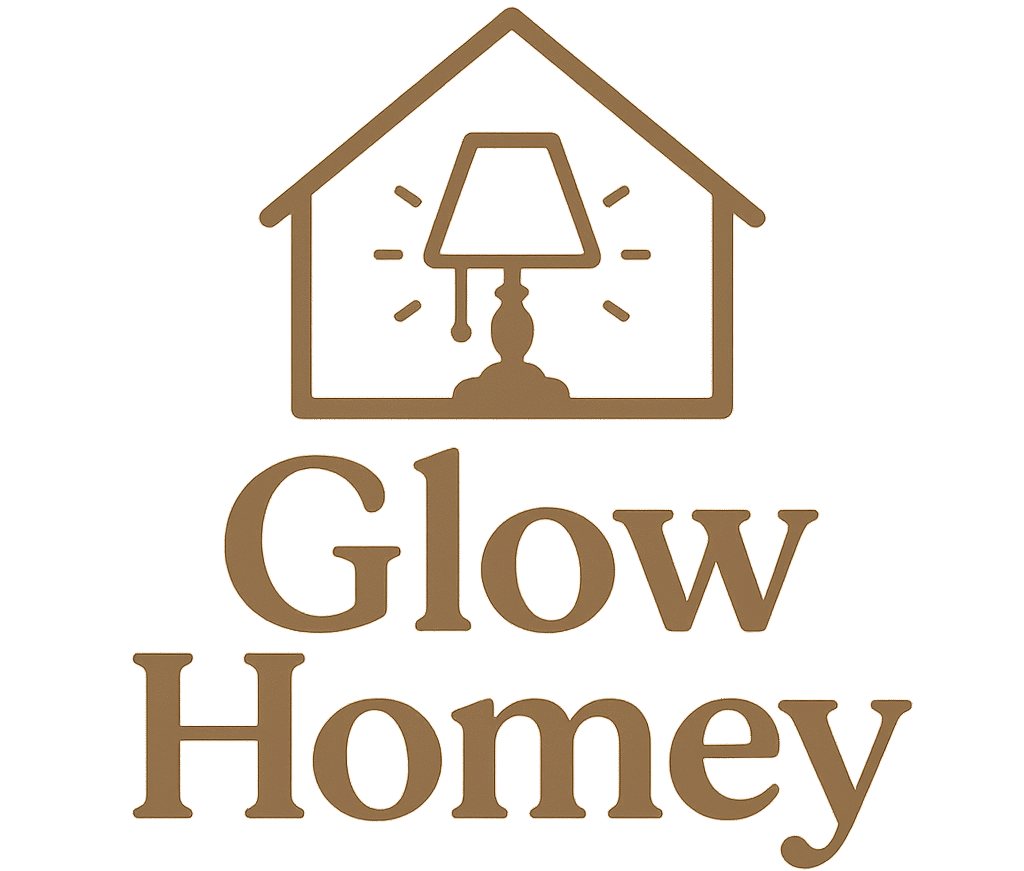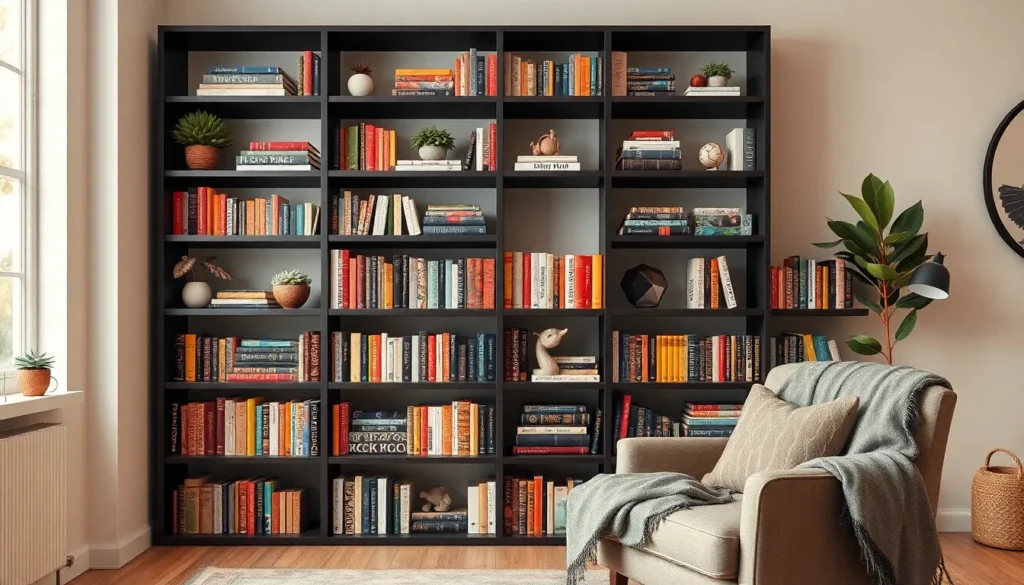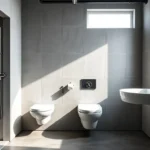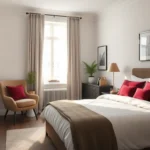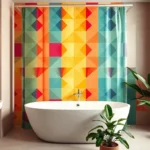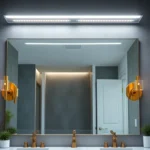Transform your boring bookshelf into a stunning focal point that reflects your personality and style. Whether you’re working with built-in shelves or a standalone bookcase we’ve got you covered with creative decorating answers that’ll make your space truly shine.
Styling a bookshelf isn’t just about cramming books onto every available inch. It’s about creating visual balance mixing textures and incorporating decorative elements that tell your unique story. From vintage collectibles to modern art pieces the possibilities are endless when you know the right techniques.
We’ll show you how to arrange books like a pro add personality with plants and accessories and create that perfect Instagram-worthy shelf you’ve been dreaming about. Get ready to turn your bookshelf from cluttered mess to design masterpiece with these proven decorating strategies.
Color-Coordinate Your Books for Visual Impact
Color coordination transforms your bookshelf from a chaotic collection into a cohesive design element. We’ll show you three proven methods to organize your books by color for maximum visual appeal.
Group Books by Color Palette
Group similar colors together to create distinct sections that feel intentional and polished. We recommend dividing your books into warm tones like reds, oranges, and yellows versus cool tones such as blues, greens, and purples. This approach works particularly well for large collections where you can dedicate entire shelves to exact color families.
Start with your most vibrant books as anchor points for each color group. Place these eye-catching spines at the ends of each section to create natural bookends that define your color zones. Neutral books in white, black, and gray serve as perfect transitions between different color sections.
Mix different shades within each group to add depth and prevent the arrangement from looking too uniform. Combine light blue paperbacks with navy hardcovers and teal vintage books to create a rich, layered appearance within your blue section.
Create Rainbow Arrangements
Arrange books in ROYGBIV order (red, orange, yellow, green, blue, indigo, violet) for a playful, gallery-worthy display. This method works best on open shelving where the full spectrum can be appreciated from a distance. We suggest starting with red books on the left and progressing through the color wheel to create a natural flow.
Use books as building blocks to fill gaps in your rainbow where certain colors might be sparse. If you’re missing orange titles, position yellow and red books adjacent to each other to bridge the color gap. This technique maintains the rainbow effect even with limited color variety.
Consider the room’s lighting when planning your rainbow arrangement since natural and artificial light affect how colors appear. Position darker colors like deep blues and purples away from direct sunlight to prevent fading, while lighter yellows and oranges can handle brighter spots.
Use Monochromatic Schemes for Elegance
Choose one color and arrange books in various shades of that hue for a sophisticated, gallery-like appearance. Monochromatic displays work exceptionally well in minimalist spaces where you want books to complement rather than dominate the room’s aesthetic. We find that blues, greens, and neutrals create the most calming monochromatic arrangements.
Layer different textures within your chosen color to prevent monotony while maintaining the elegant effect. Combine glossy dust jackets with matte paperback covers and leather-bound volumes in similar tones. This variation in finish adds visual interest without breaking the color scheme.
Incorporate decorative objects in complementary shades to enhance your monochromatic theme. White ceramic vases on an all-white book display or brass bookends with cream-colored volumes create cohesive styling that feels intentional and refined.
Mix Books with Decorative Objects
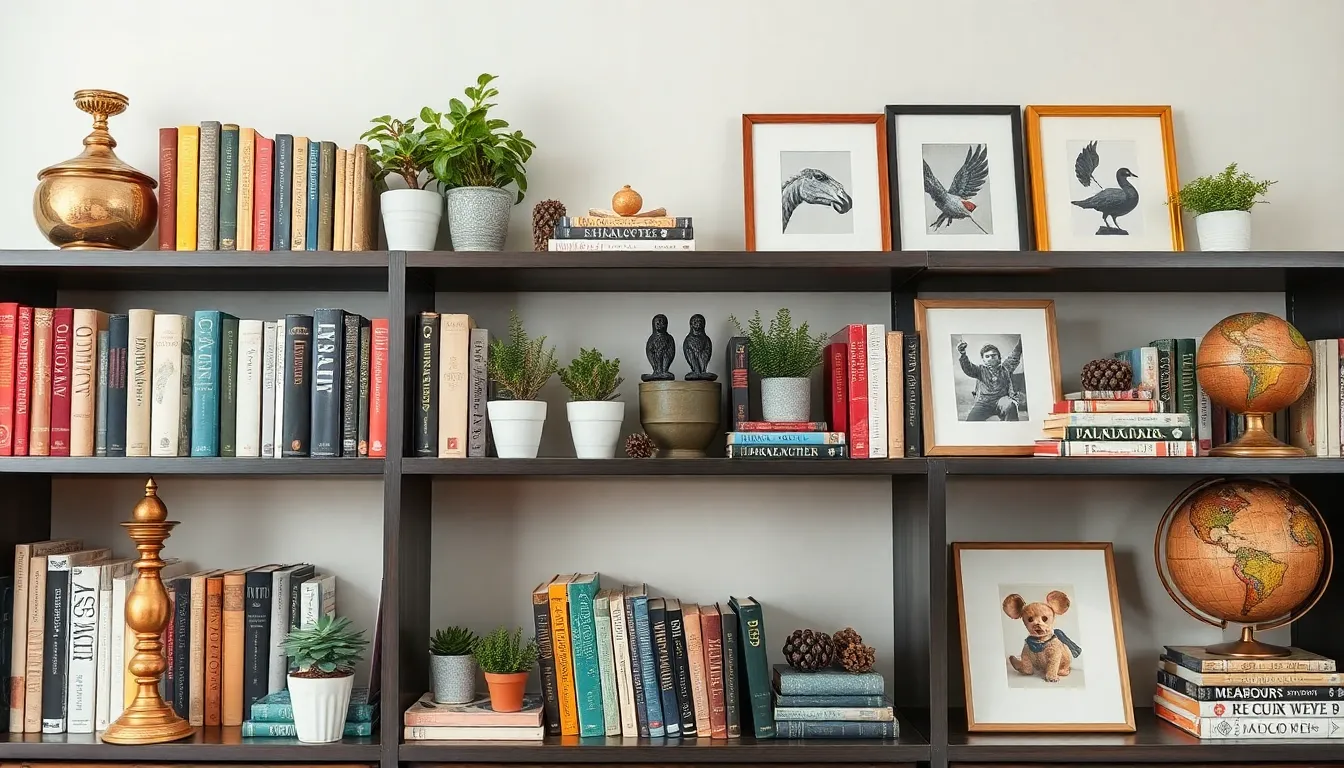
Breaking up rows of books with carefully chosen decorative elements transforms a simple bookshelf into a sophisticated display that reflects your personal style. We’ll show you how to seamlessly blend literature with decorative pieces that add visual interest and personality to your space.
Add Small Plants and Succulents
Plants breathe life into bookshelf arrangements by introducing natural textures and vibrant colors that complement your book collection. We recommend starting with low-maintenance options like pothos, which can cascade gracefully down shelf edges, or compact succulents that fit perfectly between book groupings.
Small trailing plants create visual movement as they drape naturally from shelves, softening the rigid lines of book spines. Succulents offer architectural interest with their geometric shapes and require minimal care, making them ideal for busy book lovers. Place these green accents at varying heights to establish visual rhythm throughout your display.
Consider using small ceramic or terracotta pots that match your overall color scheme to maintain cohesion across your bookshelf design.
Display Vintage Collectibles and Antiques
Vintage pieces add character and storytelling elements that give your bookshelf depth beyond its literary contents. We’ve found that antique items like brass candlesticks, vintage cameras, or old pocket watches create fascinating conversation starters while showcasing your unique taste.
Antiques work particularly well when they relate to the themes of nearby books, creating natural groupings that feel intentional rather than random. A vintage globe pairs beautifully with travel literature, while antique scientific instruments complement classic literature or academic texts.
Mix different textures and materials by combining metal, wood, and ceramic vintage pieces to prevent your display from looking too uniform. These collectibles serve as visual anchors that break up long stretches of books while adding historical richness to your arrangement.
Incorporate Picture Frames and Artwork
Picture frames and small artwork pieces personalize your bookshelf by showcasing meaningful memories and artistic preferences alongside your favorite reads. We suggest varying frame sizes and orientations to create ever-changing visual clusters that draw the eye across different shelf levels.
Artwork adds color and artistic flair that can tie together your entire bookshelf color palette while reflecting your aesthetic preferences. Small paintings, prints, or even framed quotes from beloved authors create intimate moments within your larger display.
Layer frames at different depths by placing some directly against the back wall and others slightly forward, creating dimensional interest that prevents your arrangement from looking flat. This technique helps establish visual hierarchy while maintaining the personal touch that makes your bookshelf uniquely yours.
Create Visual Balance with Horizontal and Vertical Stacking

Achieving visual balance on your bookshelf requires strategic placement that alternates between horizontal and vertical book arrangements. This ever-changing approach guides the viewer’s eye through the entire display while preventing monotony.
Stack Books Horizontally for Platform Displays
Stacking books horizontally creates elevated platforms that showcase decorative items like sculptures, vases, or plants. We recommend placing 3-4 books flat to form a stable base for your favorite ornaments. This technique adds depth and transforms ordinary books into functional display surfaces. Artists and interior designers frequently use this method to create layered visual interest throughout the shelf space.
Alternate Vertical and Horizontal Arrangements
Alternating between vertical spines and horizontal stacks keeps your bookshelf visually captivating and prevents the eye from becoming bored. Start by grouping 5-7 books vertically, then place 2-3 books horizontally beside them. This pattern creates natural breathing room and establishes rhythm across your shelving unit. Professional stylists suggest maintaining this alternating pattern throughout each shelf level for maximum visual impact.
Use Books as Bookends for Other Items
Using books as bookends integrates your literary collection into the overall design while maintaining clean lines. Stack 4-5 heavy books horizontally at each end of a shelf section to support decorative objects like candles, small plants, or picture frames. This approach eliminates the need for traditional bookends while creating functional display zones. Design experts recommend choosing books with attractive spines or covers that complement your color scheme for this bookend technique.
Add Lighting Elements to Enhance Ambiance
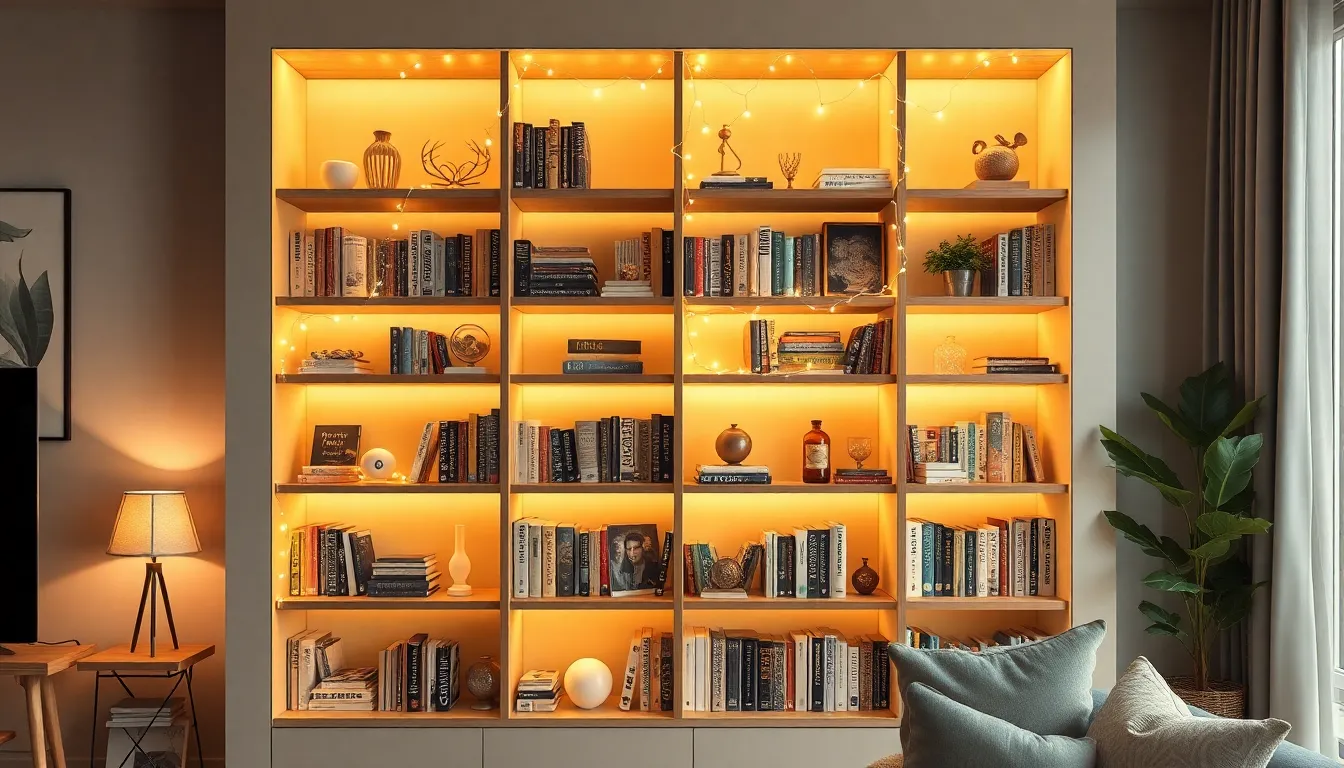
Proper lighting transforms any bookshelf from a simple storage solution into a stunning focal point that showcases your literary collection. We’ll explore three effective lighting techniques that create depth, warmth, and visual interest throughout your display.
Install LED Strip Lights Behind Shelves
LED strip lights create a modern, sleek appearance while highlighting the contents of your bookcase with sophisticated backlighting. Installing these versatile lights behind each shelf creates a dramatic glow that makes books appear to float against an illuminated backdrop. We recommend choosing warm white LED strips that complement your room’s existing lighting scheme rather than cool white options that can feel harsh.
These lights are incredibly easy to install and can be cut to size for perfect customization on any shelf dimension. Adhesive backing allows for quick installation without drilling or complex wiring, making this an ideal weekend project. Professional interior designers often use this technique to create museum-quality displays that draw attention to exact collections or decorative objects.
Place Small Table Lamps on Shelves
Small table lamps add focused lighting while creating cozy reading nooks throughout your bookshelf arrangement. We suggest selecting lamps that complement your room’s existing style, whether that’s minimalist brass fixtures for modern spaces or vintage ceramic bases for traditional decor. Positioning these lamps on different shelf levels creates multiple light sources that eliminate shadows and provide excellent task lighting.
Battery operated options eliminate the need for nearby outlets, giving you complete flexibility in lamp placement across your entire bookshelf. Compact designs work best, as they won’t overwhelm your book collection or compete with decorative objects for visual space. Consider using lampshades in neutral colors that won’t clash with your carefully coordinated book spines.
Use Battery-Operated Fairy Lights
Battery operated fairy lights add a whimsical, enchanting touch that transforms your bookshelf into a magical display. Weaving these delicate lights through your book collection creates subtle sparkles that catch the eye without overwhelming the overall design. We love placing fairy lights inside clear glass jars or vases to create unique accent pieces that double as both lighting and decoration.
These versatile lights work especially well in bedrooms or reading spaces where you want to create a relaxing, cozy atmosphere. Timer functions on many battery operated models allow the lights to automatically turn on during evening hours, creating consistent ambiance without daily maintenance. Warm white fairy lights provide the most flattering glow for showcasing book collections and complementing other lighting elements throughout your display.
Incorporate Baskets and Storage Containers
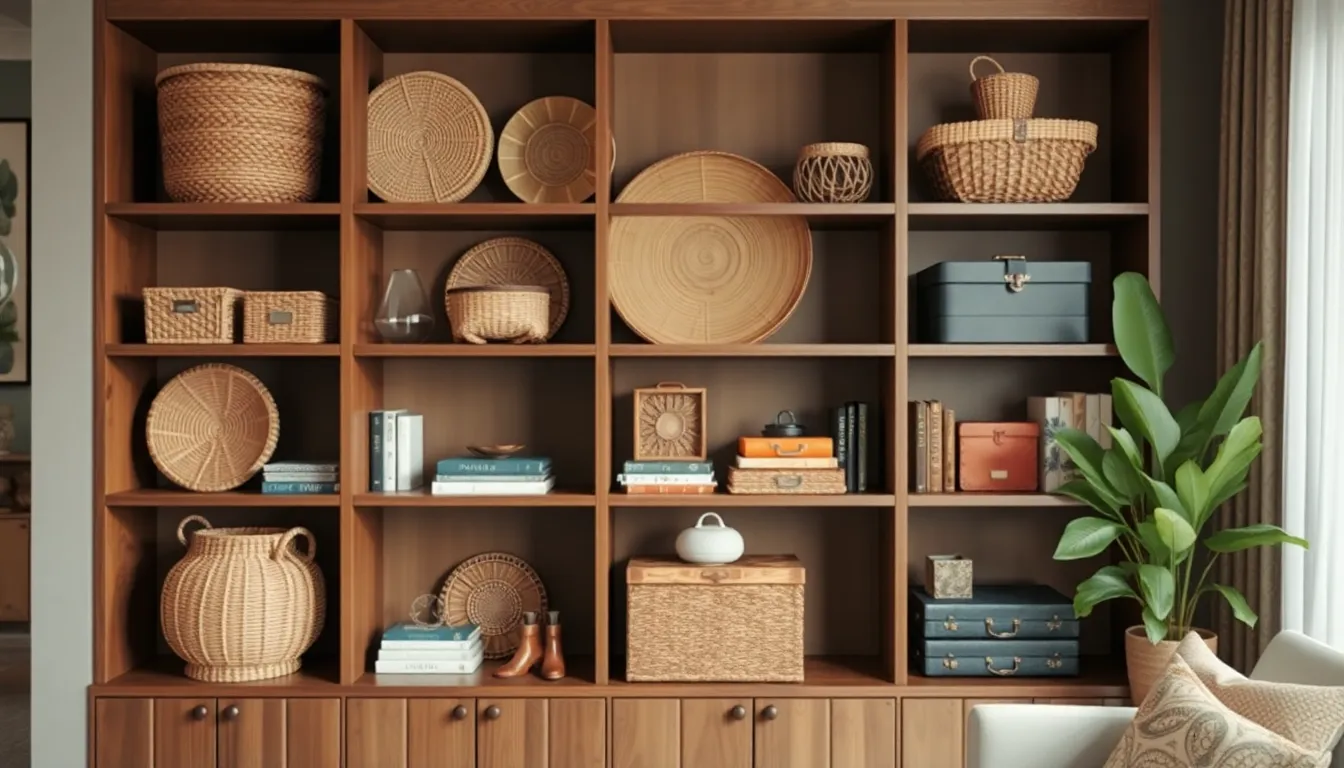
Storage answers transform cluttered bookshelves into organized displays while maintaining style. We’ll explore how baskets and containers create functional beauty in our bookshelf arrangements.
Use Woven Baskets for Hidden Storage
Woven baskets provide the perfect solution for concealing everyday items that create visual clutter. We recommend placing wicker and rattan baskets on lower shelves where they’re easily accessible yet keep magazines, toys, and cords completely out of sight.
These natural materials add warm texture to our bookshelf displays while serving essential organizational functions. Wicker baskets work particularly well for storing children’s items or electronic accessories that we use frequently but don’t want visible.
Rattan options offer exceptional durability and complement both modern and traditional decor styles. We suggest choosing baskets with tight weaves to prevent small items from falling through while maintaining their storage capacity.
Add Decorative Boxes and Containers
Decorative boxes elevate our bookshelf organization by providing stylish storage for personal documents and treasured items. We can select from various materials including wood, metal, and canvas to match our existing decor themes.
Lidded containers work exceptionally well for storing important papers or sentimental objects that require protection from dust. These boxes keep private items completely concealed while contributing to our overall design aesthetic.
Canvas storage boxes offer lightweight options that we can easily move and rearrange as our needs change. Metal containers provide industrial appeal for contemporary spaces while wooden boxes add rustic warmth to traditional settings.
Choose Storage That Matches Your Style
Neutral colored baskets and boxes blend seamlessly with most interior design schemes without overwhelming our carefully curated displays. We can select beige, white, or natural wood tones that complement existing furniture and decor elements.
Vibrant or patterned storage containers serve as accent pieces when we want to add personality to our bookshelf arrangements. These bold options work best when we use them sparingly to avoid creating visual chaos.
We should vary the sizes and shapes of our storage answers to maximize available space while creating visual interest. Mixing rectangular boxes with round baskets adds dimension and prevents our displays from appearing too uniform or predictable.
Display Personal Collections and Memorabilia
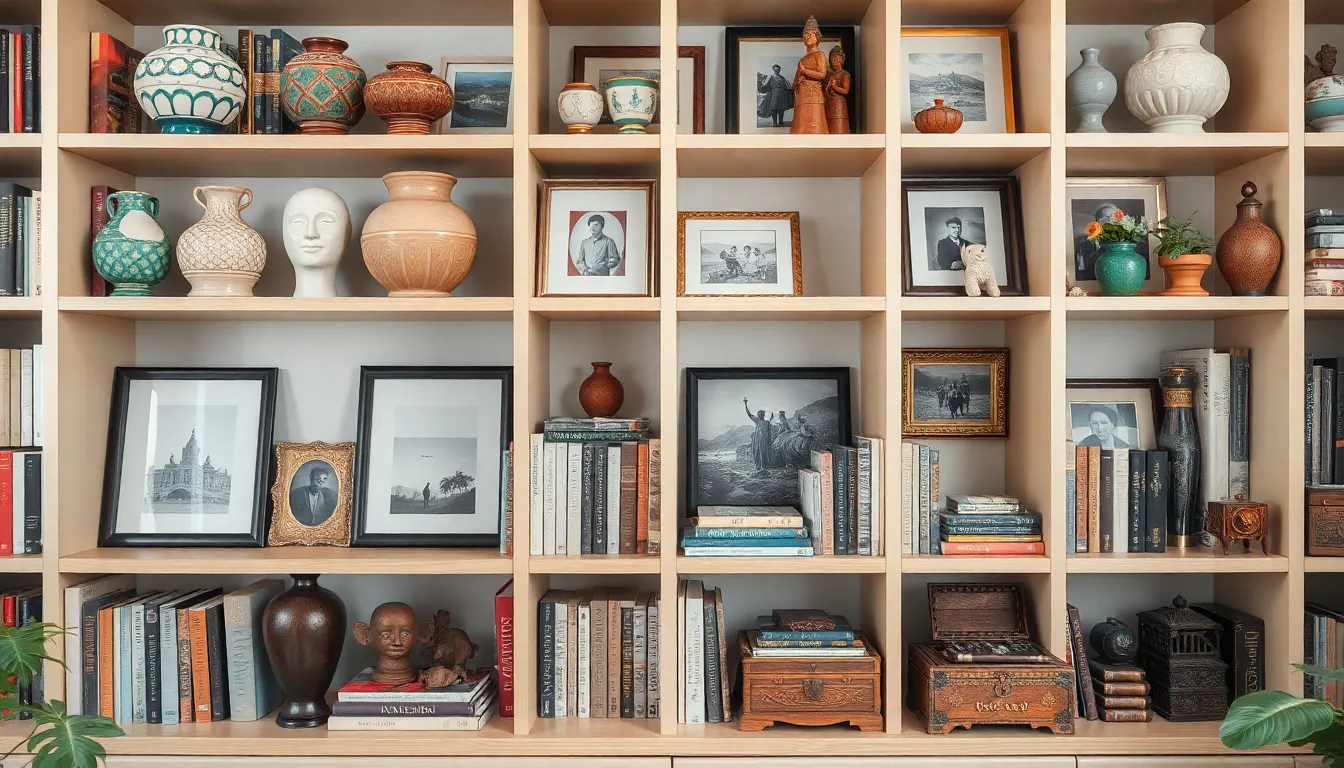
Transform your bookshelf into a personal gallery that tells your unique story through meaningful objects and cherished items. We’ll explore how to incorporate artwork, sculptures, antiques, and vintage pieces that reflect your personality and create visual interest alongside your book collection.
Showcase Travel Souvenirs and Keepsakes
Travel mementos bring global charm to your bookshelf while sparking conversations about your adventures. We recommend displaying unique artifacts from different cultures, such as handcrafted ceramics from Morocco, wooden sculptures from Bali, or vintage postcards from European cities you’ve visited. Position these treasures strategically between book groupings to create natural stopping points for the eye.
Decorative items like vases, bowls, and ceramics complement your travel souvenirs beautifully while adding texture and dimension. Choose pieces that represent different regions and time periods to create a worldly aesthetic. Small pottery from local artisans, carved stone figurines, or delicate glass ornaments can fill gaps between books without overwhelming the display.
Group similar travel items together to create themed vignettes that tell exact stories. We suggest dedicating one shelf section to beach destinations with shells and driftwood, while another area showcases mountain adventures with wooden crafts and natural stones. This approach creates cohesive visual zones while maintaining the eclectic nature of your travel collection.
Feature Hobby-Related Items and Collectibles
Hobby displays transform your bookshelf into a reflection of your passions and interests. We encourage showcasing items related to your favorite activities, whether that’s musical instruments like vintage harmonicas or small guitars, sports memorabilia such as signed baseballs or miniature trophies, or cooking utensils like antique measuring spoons and decorative whisks.
Collectible items add personality and spark curiosity among visitors to your home. Display figurines, model cars, vintage cameras, or coin collections alongside books that relate to these interests. Position a small model airplane next to travel guides, or place antique kitchen tools near your cookbook collection to create thematic connections.
Rotate your collectibles seasonally to keep the display fresh and captivating. We recommend storing some items in decorative boxes on the shelf itself, then swapping them out quarterly to showcase different aspects of your hobbies. This technique prevents overcrowding while ensuring your most treasured pieces get proper attention throughout the year.
Include Family Photos and Personal Artifacts
Family photos create warmth and intimacy within your bookshelf arrangement. We suggest using frames of varying sizes and orientations to establish visual rhythm while showcasing different generations and memorable moments. Place larger family portraits on wider shelves, then tuck smaller candid shots between books for delightful discoveries.
Personal artifacts like heirlooms and sentimental objects make your bookshelf truly unique. Display items such as vintage jewelry boxes, antique pocket watches, or handwritten letters in protective frames alongside family photos. These treasures serve as conversation starters while honoring your family’s history and traditions.
Layer personal items at different depths to create visual complexity and storytelling opportunities. We recommend placing some artifacts directly in front of books, while others sit alongside them to establish natural groupings. Brass candlesticks inherited from grandparents, for example, can anchor a section dedicated to family history books and genealogy research materials.
Use Bookends as Decorative Statements
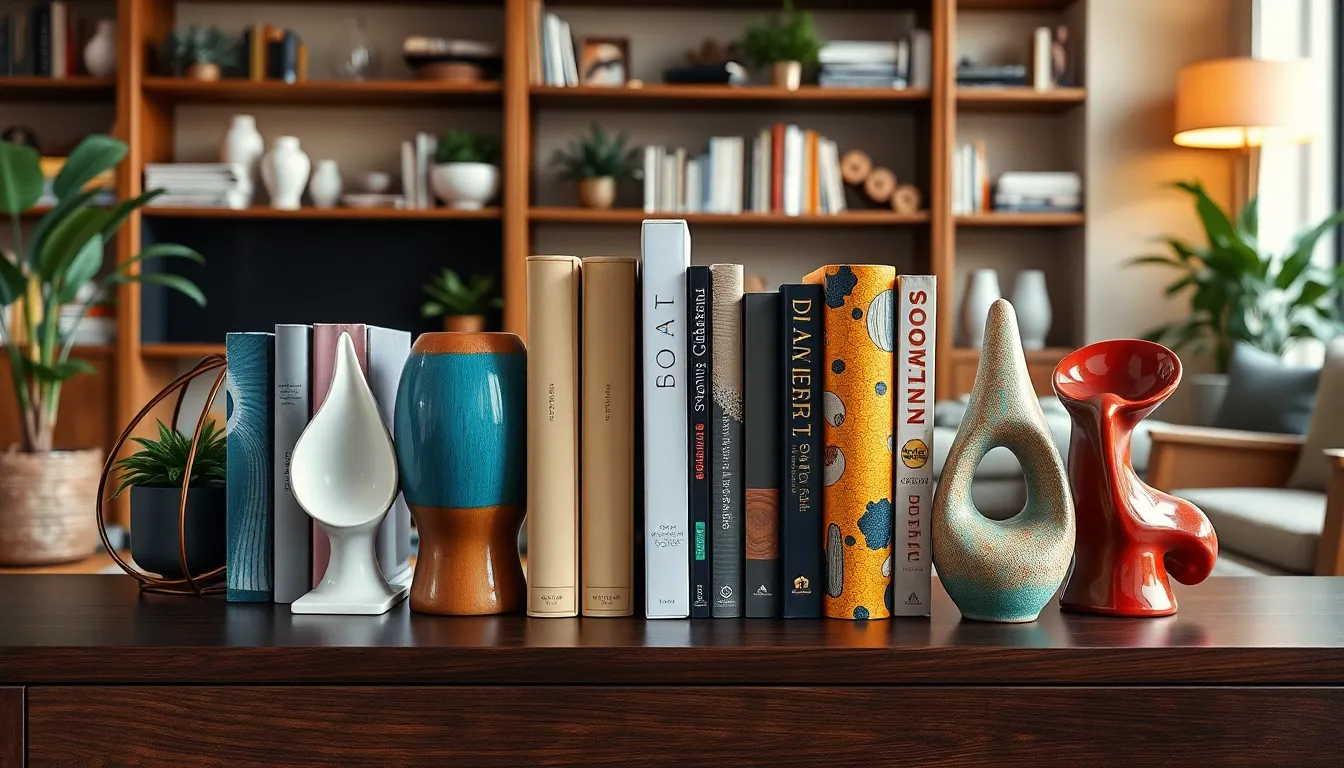
Bookends can transform from simple functional tools into stunning decorative elements that anchor your bookshelf design. We’ll show you how to select and style bookends that enhance your overall aesthetic.
Choose Sculptural and Artistic Bookends
Sculptural bookends serve as miniature art pieces that instantly elevate your bookshelf’s visual appeal. Ceramic options offer endless design possibilities, from modern geometric shapes to organic forms that complement contemporary decor. Metal bookends provide industrial elegance with materials like brass, copper, or matte black finishes that create sophisticated focal points.
Glass bookends bring transparency and lightness to heavy book collections while maintaining structural integrity. Contemporary designs featuring abstract sculptures or architectural elements transform utilitarian objects into conversation starters. Artistic bookends featuring animals, figures, or nature-inspired motifs add personality while keeping books securely in place.
Investing in visually appealing bookends creates instant impact on any shelf arrangement. Quality sculptural pieces often become treasured accessories that outlast changing decor trends and continue improving your space for years.
Match Bookends to Your Room’s Theme
Coordinating bookends with your existing decor ensures seamless integration throughout your living space. Modern interiors benefit from sleek metal or acrylic bookends with clean lines and minimal ornamentation. Traditional rooms call for classic designs like marble bookends, ornate brass pieces, or wooden options with carved details.
Eclectic spaces welcome bold, contrasting bookends that serve as statement pieces within curated collections. Color coordination plays a crucial role in achieving visual harmony between bookends and surrounding decorative elements. Neutral tones like white, black, or natural wood blend effortlessly with any color scheme.
Textural elements should complement existing materials in your room, whether that’s matching metal finishes to lighting fixtures or choosing wooden bookends that echo furniture tones. Size proportions matter significantly when selecting bookends for different shelf configurations and room scales.
Create DIY Bookends from Everyday Objects
Repurposing everyday items into custom bookends adds personal character while saving money on decorative accessories. Vintage figurines make charming bookends when weighted with sand or small stones for added stability. Large rocks or geodes from nature walks create rustic bookends perfect for bohemian or natural decor themes.
Old hardcover books can become bookends themselves when stacked and secured together with strong adhesive or decorative binding. Mason jars filled with decorative stones, shells, or colored sand offer customizable options that match seasonal decor changes. Wooden building blocks from children’s toys transform into modern geometric bookends with a coat of paint or wood stain.
Creative upcycling projects turn discarded items like old cameras, typewriters, or musical instruments into unique conversation pieces. These DIY answers reflect personal interests and hobbies while adding functional beauty to bookshelf arrangements. Small decorative boxes filled with sand provide hidden weight while maintaining attractive appearances that blend with other shelf accessories.
Add Texture with Fabric and Soft Elements
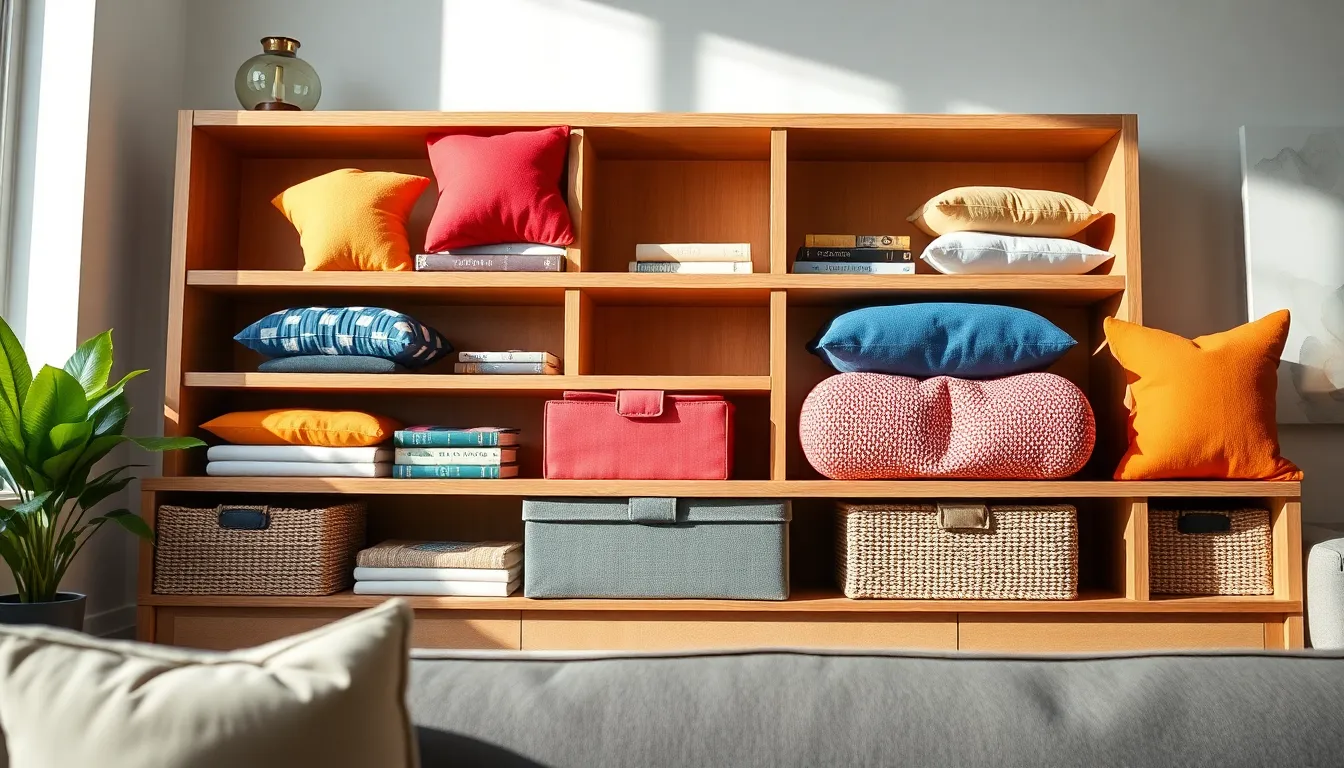
Fabric elements bring warmth and visual softness to structured bookshelf displays. These textile additions create cozy focal points that balance the hard edges of books and decorative objects.
Incorporate Small Throw Pillows
Small throw pillows transform bookshelf styling by adding pops of color and inviting texture to your display. We recommend selecting pillows in complementary colors that tie into your room’s existing palette while introducing tactile interest. Compact square pillows measuring 12 inches or smaller work best for bookshelf proportions without overwhelming the space.
Position these fabric accents strategically on wider shelves where they won’t interfere with book accessibility. Velvet pillows create luxurious depth while linen options offer casual sophistication. Mixing different textures like faux fur with cotton creates ever-changing visual layers that make your bookshelf feel more like a curated living space.
Use Fabric-Covered Storage Boxes
Fabric-covered storage boxes serve dual purposes by concealing small items like bookmarks and reading accessories while adding soft textural elements to your shelves. These versatile containers store everything from charging cables to personal mementos without creating visual clutter. Canvas boxes provide structured storage with natural appeal while upholstered options in rich fabrics like tweed or corduroy add sophisticated texture.
We suggest choosing boxes in coordinating colors that complement your book spine palette for seamless integration. Stackable fabric boxes maximize vertical storage potential while maintaining the soft aesthetic you’re creating. Position these storage answers on middle shelves where they’re easily accessible yet contribute to the overall design composition.
Add Textured Runners or Shelf Liners
Textured runners and shelf liners create foundation layers that enhance visual depth throughout your bookshelf arrangement. These fabric elements provide subtle backdrop interest without competing with your displayed items. Woven jute runners bring natural texture that complements both vintage and modern decor styles.
Cork-backed fabric liners protect shelf surfaces while adding pattern and color to each level of your display. We recommend selecting neutral tones like cream or gray that support rather than overwhelm your book collection. Geometric patterns in subtle textures create sophisticated visual rhythm across multiple shelves while maintaining cohesive flow throughout your entire bookshelf composition.
Create Themed Sections and Vignettes
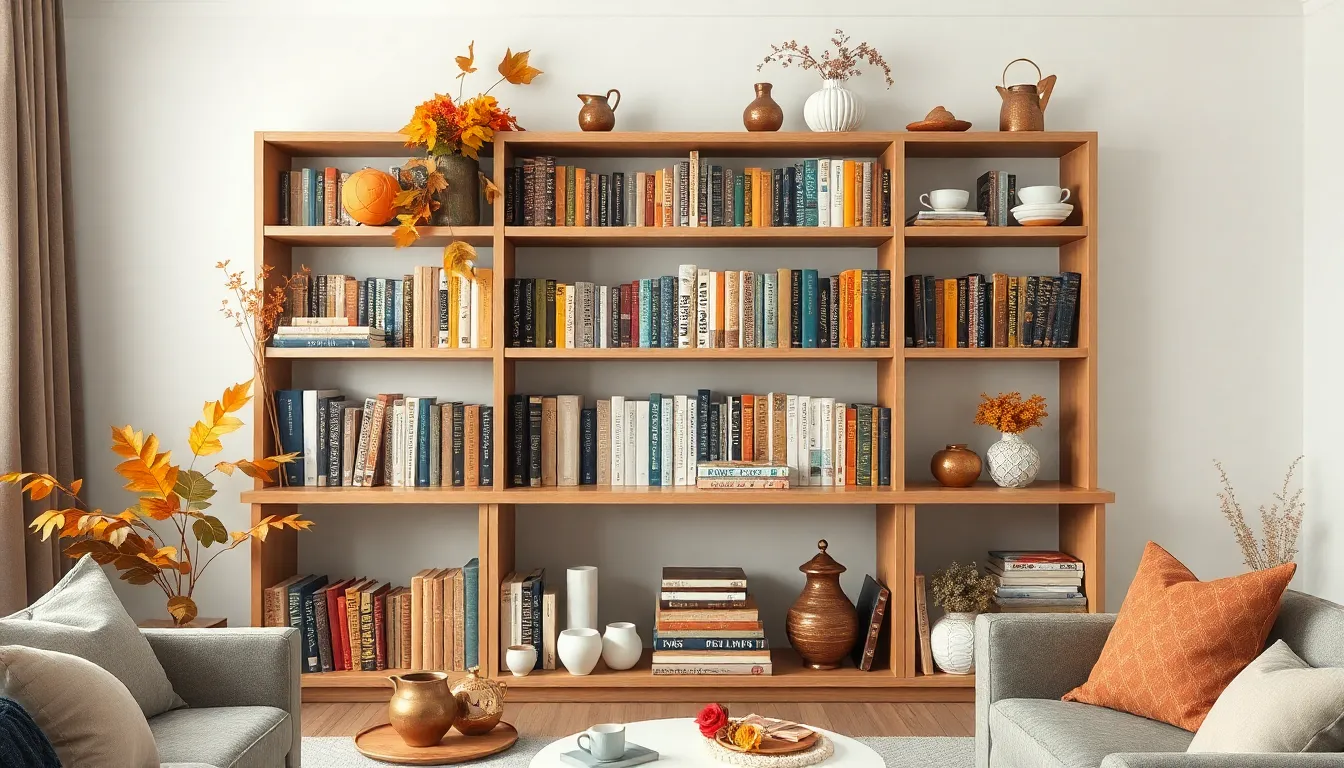
Transform your bookshelf into a curated gallery by organizing items into cohesive themes that tell your unique story. We’ll show you how to create visual harmony through strategic grouping and thoughtful displays.
Group Items by Color or Style
Color coordination creates instant visual impact across your entire bookshelf display. We recommend arranging books by color palette to establish distinct sections that flow seamlessly together. Books in similar hues like blues and greens can anchor one area while warm oranges and reds energize another section.
Style unification brings cohesion to your decorative elements and prevents a cluttered appearance. We suggest grouping similar items like vintage brass pieces, modern ceramics, or rustic wooden objects together rather than scattering them randomly. Art pieces and sculptures work best when they share common materials or design aesthetics.
Layered displays add depth when you mix vertical books with horizontal stacks topped by decorative bowls or vases. We find that maintaining consistent color schemes across these layers creates sophisticated visual continuity throughout your bookshelf arrangement.
Design Seasonal Display Areas
Seasonal themes keep your bookshelf fresh and allow you to celebrate different times of year through thoughtful decoration. We love updating displays with autumn leaves, winter pinecones, spring flowers, or summer seashells to reflect the current season.
Floral accents bring natural beauty to themed sections and can easily transition between seasons. We recommend incorporating fresh or dried flowers that complement your existing color scheme while adding organic textures to balance hard book spines.
Rotating decorative elements prevents staleness and gives you opportunities to showcase different collections throughout the year. We suggest dedicating exact shelf areas to seasonal displays where you can swap out holiday decorations, seasonal artwork, or weather appropriate accessories like cozy candles in winter or bright succulents in summer.
Organize by Room or Lifestyle Themes
Room exact themes create purposeful displays that enhance your space’s overall function and aesthetic. We recommend tailoring bookshelf decor to match each room’s purpose, incorporating office supplies and professional books in a home office while displaying cookbooks and kitchen accessories in dining areas.
Lifestyle reflection personalizes your bookshelf by showcasing items that represent your hobbies and interests. We encourage displaying musical instruments, art supplies, sports memorabilia, or travel trinkets that spark conversations and reveal your personality to guests.
Antiques and travel souvenirs add character when grouped with books that relate to their origins or time periods. We find that houseplants complement any lifestyle theme while adding vibrant natural elements that soften the geometric lines of books and decorative objects.
Maximize Space with Floating Shelves and Wall Displays
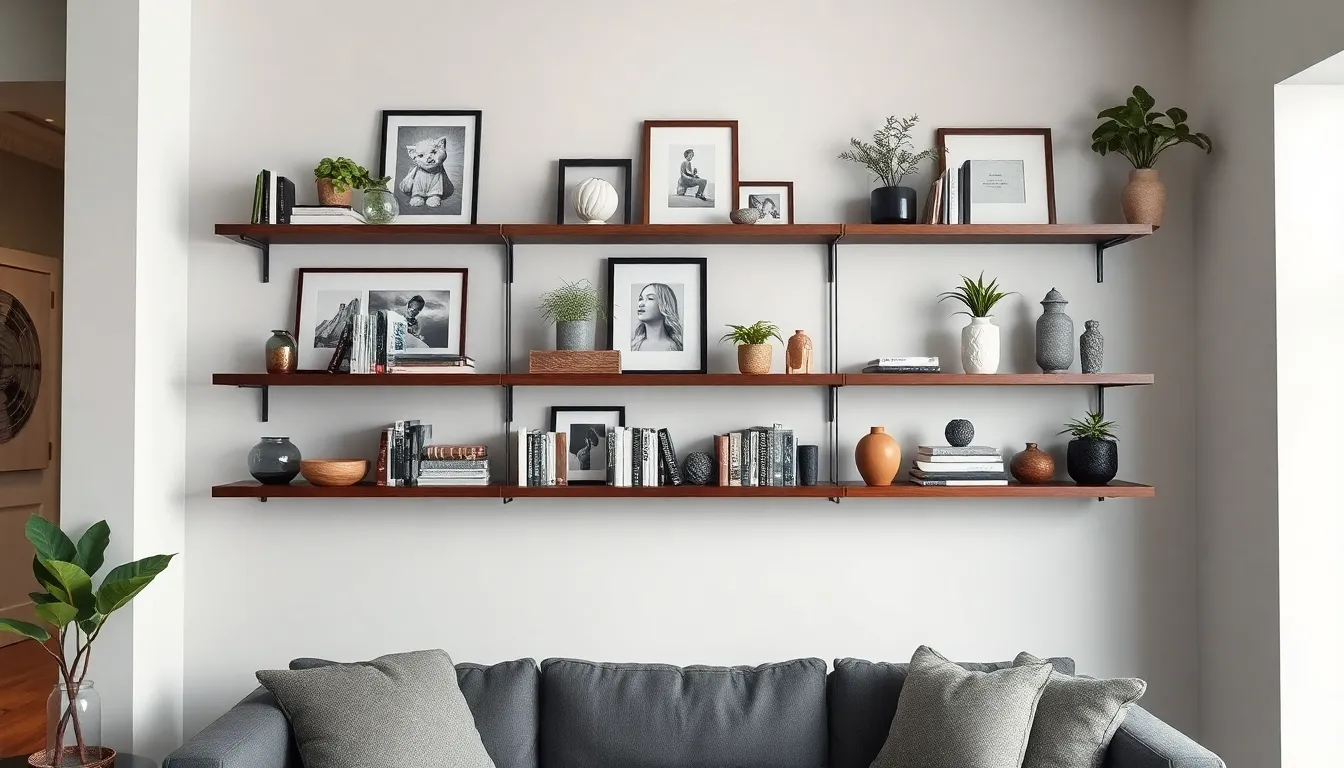
Transform your vertical walls into stunning storage answers that work even in the smallest spaces. We’ll show you how floating shelves and creative wall displays can revolutionize your bookshelf decor approach.
Install Floating Shelves at Various Heights
Installing floating shelves at different heights creates a visually ever-changing wall feature while maximizing your vertical space. We recommend placing shelves at varying intervals to guide the eye naturally up and down the wall, which proves especially valuable when floor area is limited.
Stagger your shelves between 12 to 18 inches apart for optimal visual balance. Mount some shelves higher for displaying books and decorative objects you don’t access frequently, while keeping everyday items on lower shelves within easy reach.
Create visual interest by alternating shelf lengths across your wall. We suggest mixing 24-inch shelves with 36-inch ones to accommodate different book sizes and decorative arrangements. This approach offers flexibility for arranging books alongside art pieces and personal collections.
Consider the room’s natural sight lines when planning shelf placement. Position key shelves at eye level to showcase your most treasured books and objects, then build upward and downward from these focal points.
Create Gallery Wall Combinations
Combining floating shelves with gallery wall elements adds remarkable depth and personality to any room. We’ve found that arranging framed art, photos, and sculptures alongside books creates unique wall compositions that highlight personal style.
Mix different frame sizes and orientations around your floating shelves to establish visual clusters. Place larger artwork pieces between shelf groupings, then fill in with smaller framed photos and prints to create a cohesive yet ever-changing display.
Layer your displays by positioning some frames directly on shelves while hanging others on the wall behind. This technique allows for creative expression while showcasing both your literary collection and artistic treasures in one unified arrangement.
Incorporate sculptural elements like small vases, ceramic pieces, or metallic objects between books and frames. These three-dimensional additions create visual weight and prevent the display from appearing flat against the wall.
Use Corner Shelves for Awkward Spaces
Corner shelves transform underused spaces into functional storage areas that serve as unexpected focal points. We recommend corner bookshelves for accommodating books, plants, and decorative items in spaces that typically go unused.
Install triangular or L-shaped corner shelves to fit snugly into awkward angles. These specialized shelves optimize every inch of available corner space while providing stable platforms for your favorite books and accessories.
Take advantage of vertical corner space by stacking multiple corner shelves from floor to ceiling. This approach creates a tower effect that draws attention upward while providing substantial storage capacity in a minimal footprint.
Style corner shelves with a mix of books, trailing plants, and small decorative objects to soften harsh room angles. We’ve seen how strategically placed greenery in corner displays can make entire rooms feel more balanced and welcoming.
Conclusion
Your bookshelf doesn’t have to remain a static storage solution when it can become a ever-changing reflection of who you are. We’ve explored countless ways to elevate your shelving from mundane to magnificent through thoughtful styling techniques that blend function with beauty.
The key lies in experimenting with different combinations until you find what speaks to your personal aesthetic. Whether you gravitate toward minimalist elegance or maximalist charm remember that the best bookshelf decor evolves with your changing tastes and lifestyle.
Start with one or two techniques that resonate most with you then gradually build upon your display. Your bookshelf should tell your story – make it a compelling one that guests can’t help but admire and explore.
Frequently Asked Questions
How do I create visual balance when styling my bookshelf?
Create visual balance by alternating between horizontal and vertical book arrangements. Stack some books horizontally to create platforms for decorative items, while keeping others vertical. Use books as bookends and vary the heights of objects across different shelves. This prevents monotony and guides the viewer’s eye naturally across your display.
What’s the best way to organize books by color on my bookshelf?
You can organize books by color using three methods: group similar colors together for distinct sections, create rainbow arrangements that flow through the color spectrum for a playful look, or use monochromatic schemes with various shades of one color for an elegant appearance. Choose the method that best matches your room’s aesthetic.
How can I incorporate plants into my bookshelf display?
Add small plants and succulents to introduce natural textures and vibrant colors. Choose low-maintenance options like pothos or compact succulents that thrive in indoor conditions. Place them strategically between books or on horizontal book stacks to create natural focal points and break up the linear patterns of your books.
What lighting options work best for bookshelf displays?
Three effective lighting techniques include: LED strip lights installed behind shelves for a modern glow, small table lamps to create cozy reading nooks, and battery-operated fairy lights for whimsical ambiance. These lighting elements illuminate your display while adding depth, warmth, and visual interest to make your bookshelf more inviting.
How do I use storage containers without compromising style?
Choose woven baskets for lower shelves to hide everyday items while adding warm texture. Use decorative boxes in materials that match your decor theme for storing personal documents. Opt for neutral-colored containers for seamless blending, or use vibrant patterns sparingly as accent pieces. Vary sizes and shapes for maximum functionality.
What types of decorative objects should I include on my bookshelf?
Incorporate vintage collectibles, antiques, picture frames, and personal memorabilia that reflect your interests. Items like brass candlesticks, vintage cameras, travel souvenirs, and family photos add character and storytelling elements. Choose pieces that complement your color scheme and create conversation starters while showcasing your personality.
How can I add texture and warmth to my bookshelf?
Incorporate fabric elements like small throw pillows in complementary colors, fabric-covered storage boxes, and textured shelf liners. These textile additions balance the hard edges of books and decorative objects, making your bookshelf feel more like a curated living space rather than just storage.
What are some creative bookend options for my display?
Select sculptural and artistic bookends made from ceramic, metal, or glass to serve as focal points. Match bookends to your room’s theme for seamless integration. Consider DIY options using everyday objects for personalized touches. Bookends should provide functional support while contributing to your bookshelf’s visual appeal and character.
How do I create themed sections on my bookshelf?
Group items by color, style, or subject matter for visual harmony. Create seasonal themes to keep displays fresh throughout the year. Organize sections by lifestyle themes that reflect your hobbies and interests. Layer displays with varying heights and use the rule of threes for balanced vignettes that tell your unique story.
Can I maximize bookshelf space in small rooms?
Yes, install floating shelves at varying heights to create visual interest and optimize vertical space. Use staggered placements for balance and incorporate corner shelves with triangular or L-shaped designs. Combine gallery walls with books and framed art to create unique compositions that maximize both style and functionality in compact spaces.
